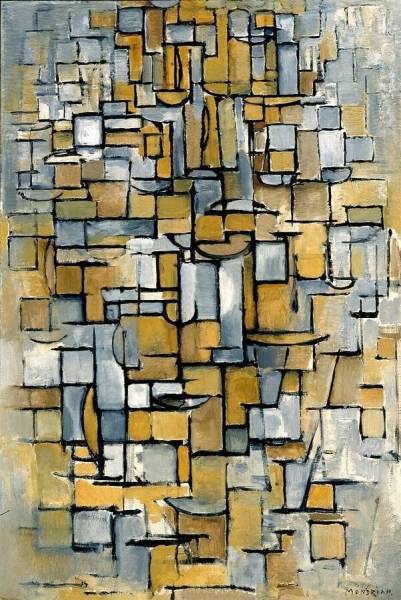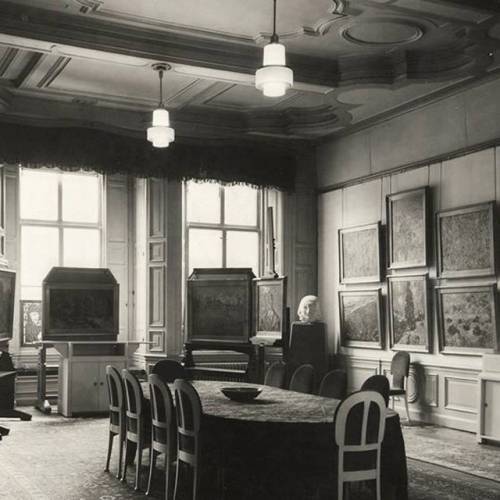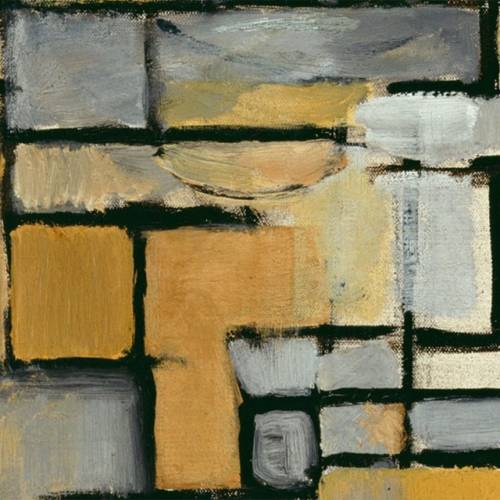Influence
Initially, Piet Mondriaan painted in the naturalistic style of the Hague School. Curious about the latest developments in the art, such as the cubism of Picasso and Braque, Mondriaan leaves for Paris in 1911. Under the influence of the cubists, he soon reduces his colour to mostly grey, ochre and brown and the recognizable reality gradually disappears from his paintings.
Analytical cubism
Tableau no. 1 clearly shows the influence of analytical cubism. In this, an object or figure is dissected, broken into fragments and converted into a complex structure. The composition is built up from the middle and the shapes become blurred towards the edges. Tableau no. 1 has an underdrawing of a tree, but this motif is barely recognizable.
First steps
Mondriaan dissects his subject into countless segments. This creates a lively structure of horizontal and vertical, straight and slightly curved lines and grey and ochre surfaces. In this painting and in other works from the same year, Mondriaan takes his first steps towards ‘the unchanging pure reality behind the changeable forms of nature’.


